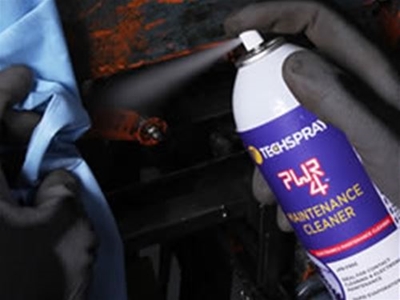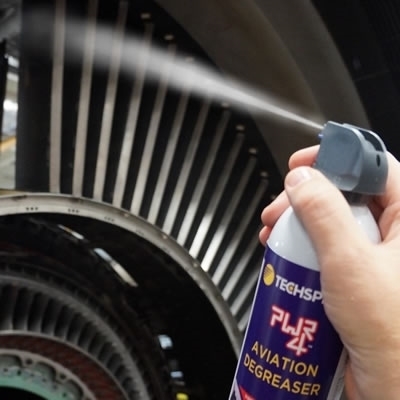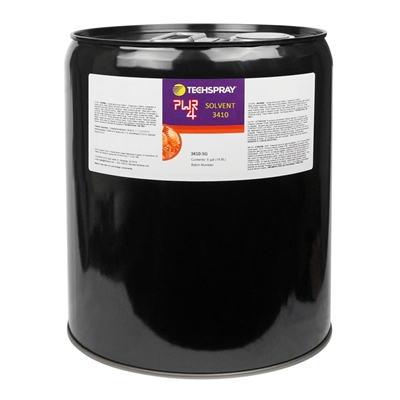June 2022 – In the report “Perchloroethylene Draft Revised Unreasonable Risk Determination for Public Comment”, the US Environmental Protection Agency (EPA) resolved that the solvent “presents an unreasonable risk for sixty(60) conditions of use” [1], including:
- Domestic Manufacture or Import
- Consumer use in dry cleaning and cold cleaning
- Industrial and commercial use for vapor degreasing
- Processing into cleaning and degreasing products
- Inks, adhesives, automotive care, and paints/coatings
This is the most explicit, unequivocal declaration against Perchloroethylene (PERC, PCE) issued by any major U.S. regulatory agency to date, implying that PERC’s availability for dry cleaning is rapidly approaching its end. The new draft revision will modify the Final Risk Evaluation published in December 2020. Overall, 60 of the 61 EPA-evaluated conditions of use would drive the chemical unreasonable risk determination. More recently, the agency released a regulatory agenda, which outlines plans to propose a final risk management rule for PERC by August 2024.
Now is the perfect time to consider better alternatives to PERC, and Techspray provides multiple substitutes just as good as conventional options. The PWR-4TM cleaning solvents from Techspray were created as safer alternatives to harmful solvents like Perchloroethylene (Tetrachloroethylene, PERC, or PCE). Trans 1,2-dichloroethylene (trans-DCE) is used in the formulation of PWR-4TM products, which are free of PCE or any other dangerous air pollutants (HAP).
About Perchloroethylene (PERC, PCE)
Perchloroethylene, also known as Tetrachloroethylene (CAS 127-18-4), is the most common solvent used for dry cleaning operations in the United States [2]. PERC is a nonflammable colorless liquid widely employed as a cleaning and degreasing agent; it serves as a precursor chemical for other consumer products such as inks, adhesives, lubricants, greases, and sealants.
At the beginning of the 1940s, PERC became one of the most frequently used solvents to dry clean fabrics, along with Trichloroethylene (TCE) and carbon tetrachloride. Since then, a variety of manufacturers have used it in brake cleaners, aerosol degreasers, aerosol lubricants, gun ammunition sealants, weld splatter protectants, stone polishes, wipe cleaners, and stainless steel polishes.
As of 2021, there were about 20,600 dry cleaning shops with roughly 160,000 employees in the United States [3]. Perchloroethylene is the principal solvent used by 60-65% of dry cleaners nationwide, with the remainder predominantly using other high-flashpoint hydrocarbon solvents. Even with the latest fifth generation of dry cleaning machines, regulations still consider PERC to pose unreasonable risks to workers [4].
Safety Concerns
In the document “Toxicological Profile for Tetrachloroethylene” (June 2019), the Agency for Toxic Substances and Disease Registry of the US Dept. of Health and Human Services states [5]:
“Tetrachloroethylene exposure may harm the nervous system, liver, kidneys, and reproductive system, and may be harmful to unborn children. If you are exposed to tetrachloroethylene, you may also be at a higher risk of getting certain types of cancer (e.g., bladder cancer, multiple myeloma, or non-Hodgkin’s lymphoma)… People who are exposed for longer periods to lower levels of PERC in the air may have changes in mood, memory, attention, reaction time, or vision.”
It goes on to reference negative effects shown in animal studies:
“Studies in animals show problems with pregnancy (such as miscarriage, birth defects, and slowed growth of the baby) after oral and inhalation exposure. In animals, tetrachloroethylene has been shown to cause cancers of the liver, kidney, and blood system.”
The hazards regarding perchloroethylene (PERC, PCE) have been established by public health agencies, but the dispute about the pertinence of animal studies on humans remains still. There are several case studies in the industry where worker exposure to perchloroethylene led to major health effects. The following is a cited assessment reported in Seattle (1995), where 55 dry-cleaning employees were exposed to PCE at atmospheric levels higher than recommended values:
“It was concluded that mild to moderate hepatic parenchymal changes occur more frequently in workers exposed to perchloroethylene than in populations not exposed to chemical solvents and that these effects are underestimated by serum hepatic transaminase activity… Two other cross-sectional studies that investigated dry cleaners with perchloroethylene exposures of less than 25 ppm, also found few biochemical abnormalities.”
Federal agencies have been relatively sloppy in detailing rulemaking for PERC; however, OSHA has set a permissible exposure limit (PEL) of 100 -200 ppm, and a 300 ppm max peak (< 5min each 3h). Also, the International Agency for Research on Cancer (IARC) listed it as a “Probably carcinogenic to humans” substance, which means that there is strong evidence that it can cause cancer in humans by all routes of exposure, but at present, it is not conclusive.
In 2021, Minnesota was the first U.S. State to ban Perchloroethylene [6]. At the same time, ACGIH has listed the TLV for PERC as 25 ppm and has confirmed it as an animal carcinogen with unknown relevance to humans. Comparable to TCE, nPB, and MeCl in toxicity, perchloroethylene has been determined by the National Toxicity Program (NTP) as “reasonably anticipated to be a human carcinogen.”
Latest News on EPA Regulations
The EPA has recently introduced a new regulation targeting the health risks associated with perchloroethylene (PCE). The proposed rule "Perchloroethylene (PCE); Regulation Under the Toxic Substances Control Act (TSCA)" (added on Jun 15, 2023) focuses on reducing PCE usage, implementing engineering controls, and promoting safer alternatives. It prohibits most industrial and commercial uses of PCE, including manufacturing (including import), processing, and distribution, as well as its use in consumer applications.
The proposed rule also enforces a 10-year phaseout of PCE in dry cleaning and spot cleaning. Strict workplace controls and a Workplace Chemical Protection Program (WCPP) are required for the remaining permitted occupational uses, and laboratory use has specific controls. Recordkeeping and downstream notification requirements are established, while emergency uses related to the National Aeronautics and Space Administration are temporarily exempted if no safer alternative is available.
The EPA encourages the dry-cleaning industry to transition to safer alternatives, promoting greener and more sustainable practices. This shift not only protects workers and customers but also contributes to reducing environmental pollution. Dry cleaning businesses must familiarize themselves with the updated requirements, evaluate their practices, and explore compliant alternative solvents or cleaning methods. Engaging in dialogue with regulators, equipment manufacturers, and suppliers can aid in a smooth transition.
The regulation represents a significant milestone in balancing effective cleaning methods with the protection of public health and the environment. As the dry-cleaning and spot cleaning industries adapt to these changes, the adoption of safer practices and technologies is expected to make the industry more sustainable and responsible.
In conclusion, the EPA's new regulation on PCE in the dry-cleaning industry demonstrates a commitment to protecting public health and the environment. By setting stricter usage limits and encouraging the transition to safer alternatives, the EPA aims to mitigate risks and promote sustainability. Stakeholders in the industry should prioritize the well-being of workers, customers, and communities while embracing innovative and eco-friendly solutions.
The Search for Perc Replacements
Perchloroethylene or Tetrachloroethylene (PERC, PCE): 1) has demonstrated to cause numerous health problems in both animal and human studies; 2) has been documented to promote worker safety issues; 3) threshold value limits have been set well below achievable minimums, and 4) the EPA has stated explicitly that it should not be used for dry cleaning of any kind. At this point, it is irrelevant whether the EPA bans PERC permanently or not. Effective alternatives for the solvent are readily available in the market, so why not make the switch?
The following are key features of Perchloroethylene (Tetrachloroethylene, PERC, PCE) that are needed in a viable alternative:
- Nonflammable
- Highly stable
- Non-ozone depleting
- High solvency of oils, waxes, and greases
- Economical – (cost is a major factor that keeps PERC on the market)
Techspray has engineered the PWR-4™ cleaning solvents to be safer replacements for tetrachloroethylene and other toxic solvents. PWR-4™ is formulated with trans 1,2-dichloroethylene (trans-DCE) and does not contain Perchloroethylene (Tetrachloroethylene, PERC, PCE) or any other hazardous air pollutants (HAP). PWR-4 high-performance solvent cleaners are non-flammable, non-ozone depleting, have powerful cleaning action, and are reasonably priced compared to PERC.
PWR-4 high-performance cleaners include:
- PWR-4 Industrial Maintenance Cleaner (part #3400) – The aerosol blasts away oil and contaminants from contacts, printed circuit boards, barcode instruments, switch boxes, gear boxes, and electronic motor controllers. Grease and oil flow right off, reducing the time and materials needed to scrub off stubborn soils. Bulk liquid packaging is available for dry cleaning, vapor degreasing, ultrasonic cleaning, and immersion (cold) cleaning.
- PWR-4 Flux Remover (part #3401) – This innovative solvent is much safer than PERC and quickly cleans the most difficult baked-on R, RMA & no-clean fluxes from electronic assemblies. It is engineered to remain stable and effective over thousands of cycles in dry cleaning and vapor degreasing equipment.
- PWR-4 Aviation Degreaser (part #2851-20S) – A aerosol degreaser with a specially engineered strong grease removal property suitable for hydraulic fluids, fuel oils, lubricating oils and greases, and other organic residues. PWR-4 Aviation Degreaser spray features a powerful, long-reaching spray to clean hard-to-reach parts from as far as 10 feet. It is fast evaporating, quick penetrating, and ideal for cleaning aviation parts.
- PWR-4 Transit Degreaser (part #2863-20S) - Single-purpose aerosol degreaser, with strong removal ability of oxidized hydraulic fluids, carbonized oils and fuels, lubricating oils and greases, and other organic residues. It is fast evaporating, quick penetrating, and ideal for cleaning heavily soiled parts.
For technical help in the selection and qualification process, contact Techspray at 800-858-4043 or info@itwcce.com. More information is available at www.techspray.com.
References
[1] Environmental Protection Agency (EPA). (2022, June). Perchloroethylene - Draft for public comment. Retrieved July 10, 2022, from https://www.epa.gov/system/files/documents/2022-06/PCE_127-18-4_Risk%20Determination_06-24-2022-revised-clean.pdf
[2]Ceballos, D. M., Fellows, K. M., Evans, A. E., Janulewicz, P. A., Lee, E. G., & Whittaker, S. G. (2021). Perchloroethylene and dry cleaning: It's time to move the industry to Safer Alternatives. Frontiers in Public Health, 9. doi:10.3389/fpubh.2021.638082
[3] BLS. Occupational Employment and Wages, May 2021. (2022, March 31). 51-6011 laundry and dry-cleaning workers. Retrieved July 10, 2022, from https://www.bls.gov/oes/current/oes516011.htm
[4] Miller, A. (2021, August 10). The history of dry cleaning solvents and the evolution of the dry cleaning machine. Retrieved July 10, 2022, from https://www.enviroforensics.com/blog/the-history-of-dry-cleaning-solvents-and-the-evolution-of-the-dry-cleaning-machine/
[5] Agency for toxic substances and disease registry. (2019, June). Toxicological Profile for Tetrachloroethylene. Retrieved July 11, 2022, from https://www.atsdr.cdc.gov/toxprofiles/tp18.pdf
[6] Midwestern Office. (2021, April 20). With unanimous legislative support, Minnesota bans the use of perchloroethylene by Dry Cleaners. Retrieved July 11, 2022, from https://csgmidwest.org/2021/04/20/with-unanimous-legislative-support-minnesota-bans-use-of-perchloroethylene-by-dry-cleaners/












